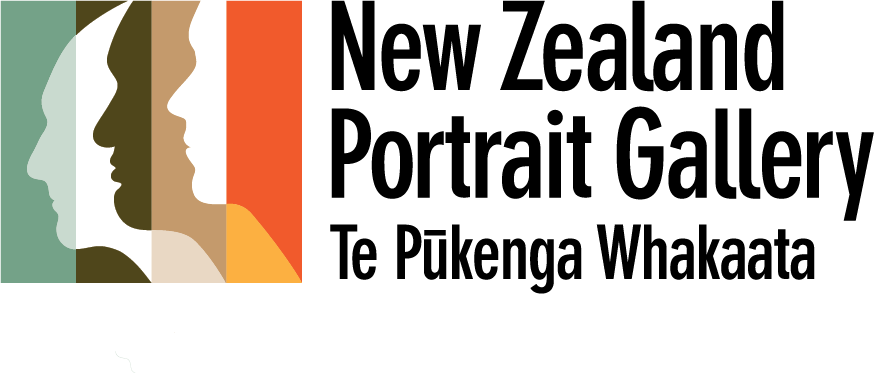He Riri Awatea: Filming the New Zealand Wars and the portrait of Queen Elizabeth II
Sometimes, as history is created, two significant events collide – and so it is with the passing of Queen Elizabeth II and our exhibition He Riri Awatea: Filming the New Zealand Wars.
Te Pūkenga Whakaata The New Zealand Portrait Gallery honours and acknowledges the passing of the Queen. The portrait of the Queen is from our permanent collection. On this occasion it is placed at the front entrance, a space that we use to respond to contemporary issues.
Beyond this portrait is the gateway to our major exhibition He Riri Awatea: Filming the New Zealand Wars. This exhibition tells of 19th century colonial New Zealand where a combination of Crown troops and colonial volunteers campaigned to suppress Māori resistance to land sales and confiscations.
Visitors to the gallery, Pakeha and Māori and others, come to view the interpretation of the New Zealand Wars through fictional film, documentary interviews, published accounts and lesser known family stories and perspectives.
He Riri Awatea: Filming the New Zealand Wars draws emotional responses particularly where actual tūpuna are shown or referenced. The films show conflicting narratives from Māori and Pakeha perspectives and the complex positions in which Māori and Pakeha found themselves.
Can our displaying of the portrait of Queen Elizabeth II to acknowledge her passing, ever be reconciled with the New Zealand Wars exhibition just beyond her portrait? Did Queen Elizabeth II care about the New Zealand Wars? Should she be honoured at all within this context? We recognise that there is no perfect answer to these difficult questions.
But we take into account the following: on her visit to New Zealand in 1995, the Queen was hosted by Kuini Dame Te Atairangikaahu at Turangawaewae where she signed into law the Crown’s formal apology to Waikato-Tainui. That apology, now enshrined in statute and personally signed by the Queen records that the apology is given because the Crown acted unjustly in sending troops to fight Waikato-Tainui after unfairly labelling them rebels and offers “… profound regret and apologies for the loss of lives because of the hostilities arising from its invasion and at the devastation of property and social life which resulted…”
The apology formed part of the Crown’s first major settlement of historical confiscation (raupatu) claims with Māori. In signing this apology, the Queen paved the way for many more Tiriti o Waitangi settlements to include Crown apologies for what was done during those darkest times in our history.
Since then, the Queen has appointed three Māori New Zealand Governors-General: Sir Paul Reeves (Taranaki) Sir Jerry Mateparae (Whanganui) and our current Governor-General, Dame Cindy Kiro (Tai Tokerau).
In her reign, we have seen te reo Māori acknowledged as New Zealand’s official language and have witnessed its ongoing revival give truth to the status being given to it.
Te Pūkenga Whakaata The New Zealand Portrait Gallery is placed in a unique position as an exhibition gallery where we contextualise the passing of our long reigning 21st century monarch Queen Elizabeth II with an exhibition portraying the 19th century New Zealand history of her great-great- grandmother, Queen Victoria.
Ka tika, ka tangi te wehenga o te kotukuku rerenga tahi.
Noreira haere atu ra e te kuini Irihapeti Tua Rua.
Haere hoki ki te kainga tuturu o nga maatua tupuna.
Haere ki te Reinga, Haere, Haere, Haere.
